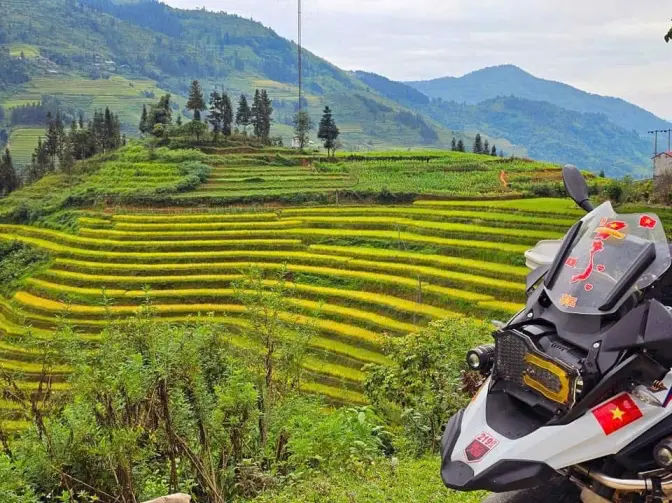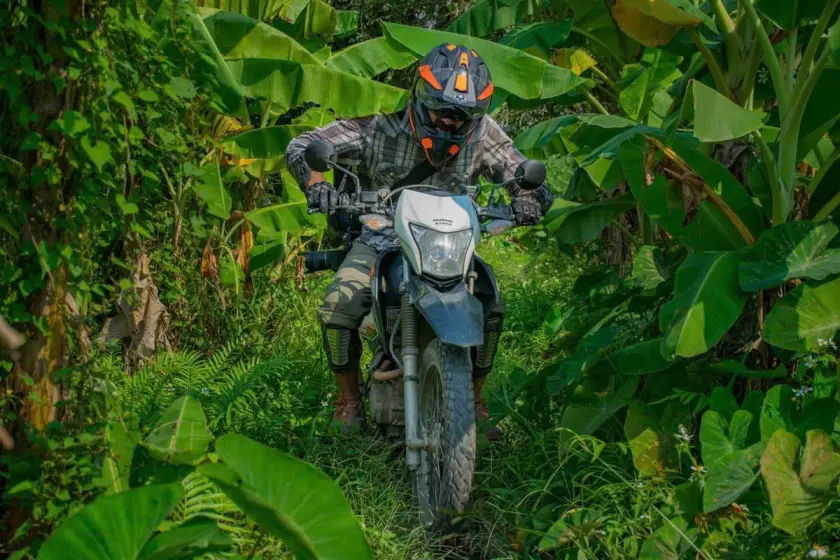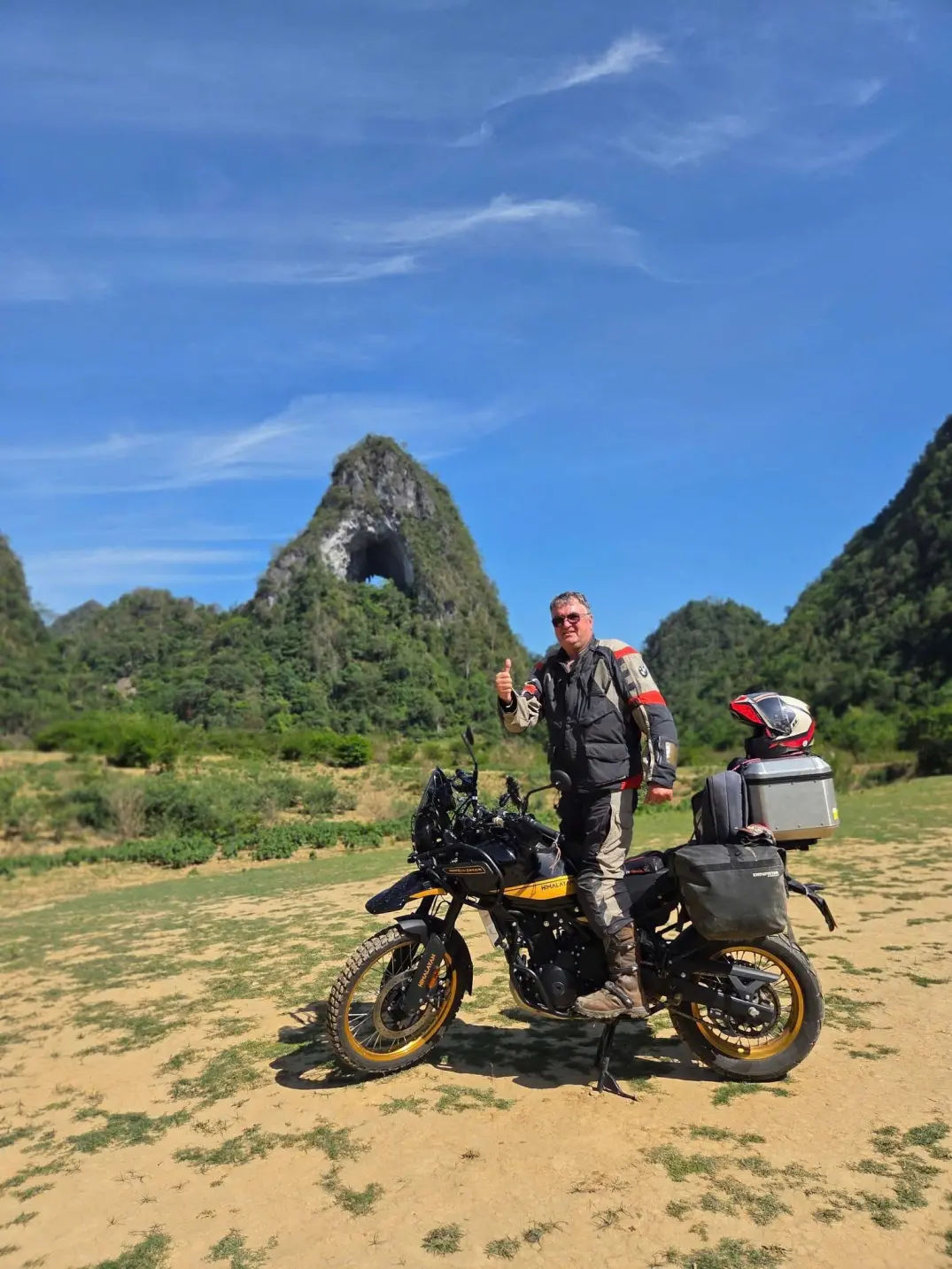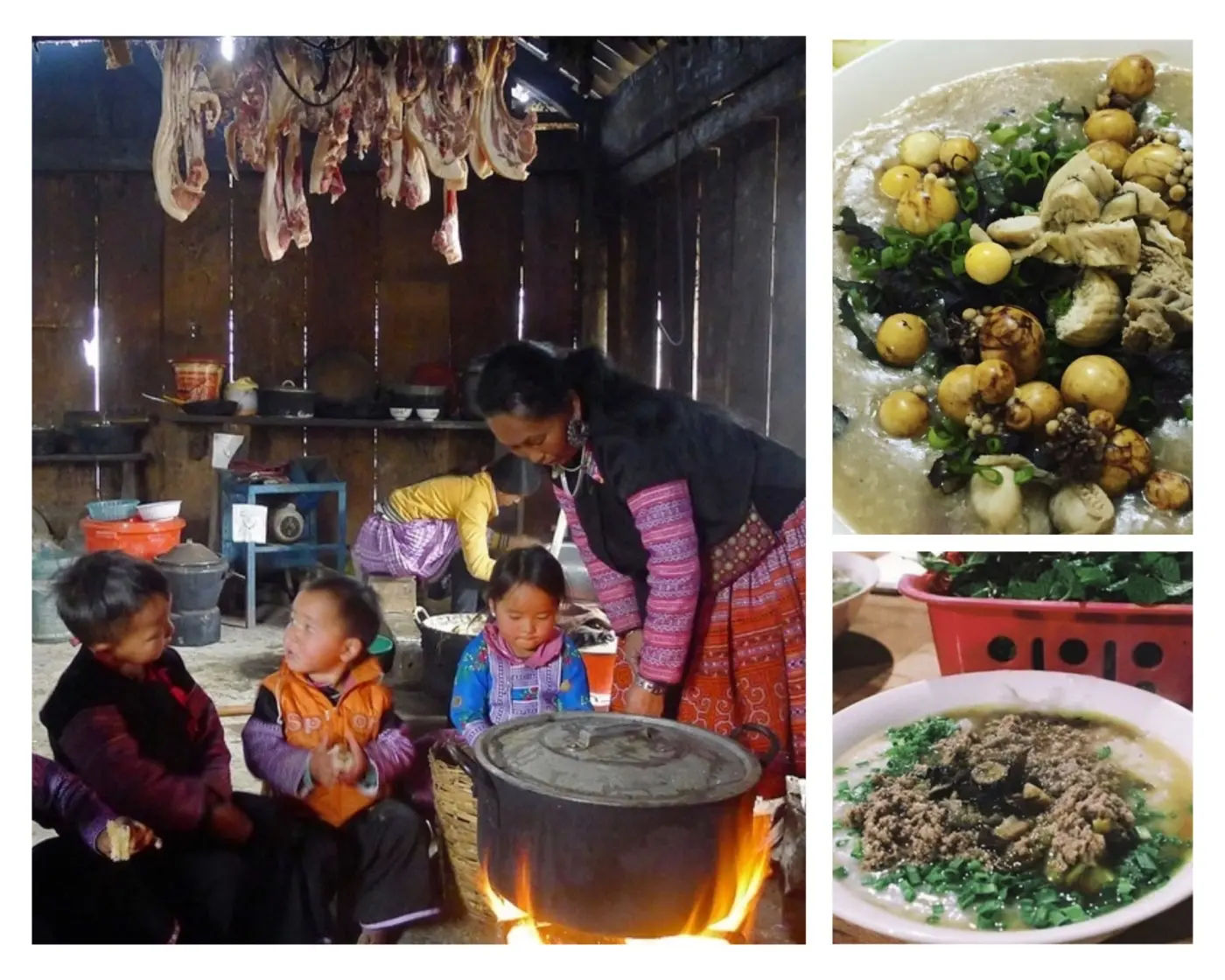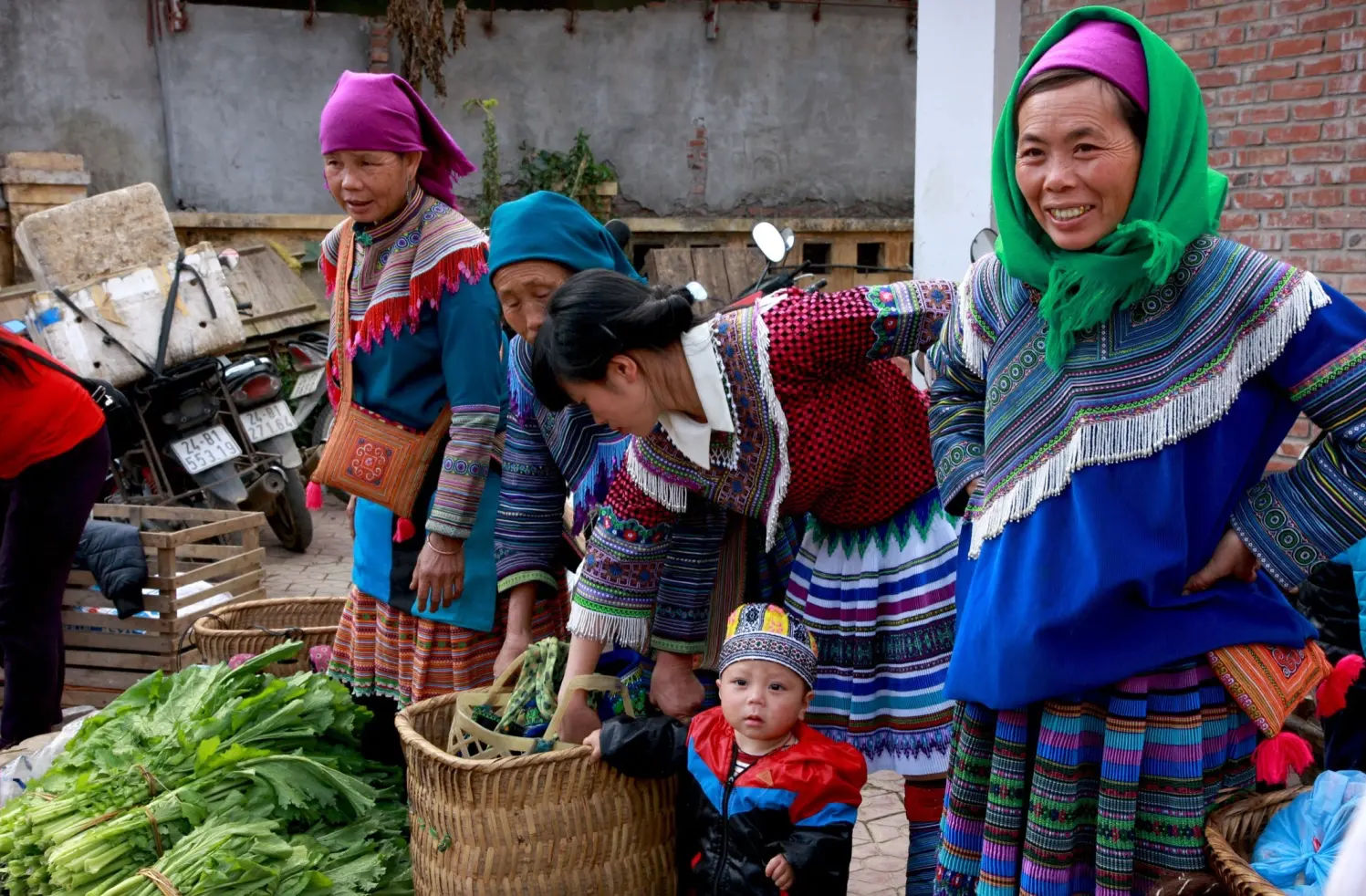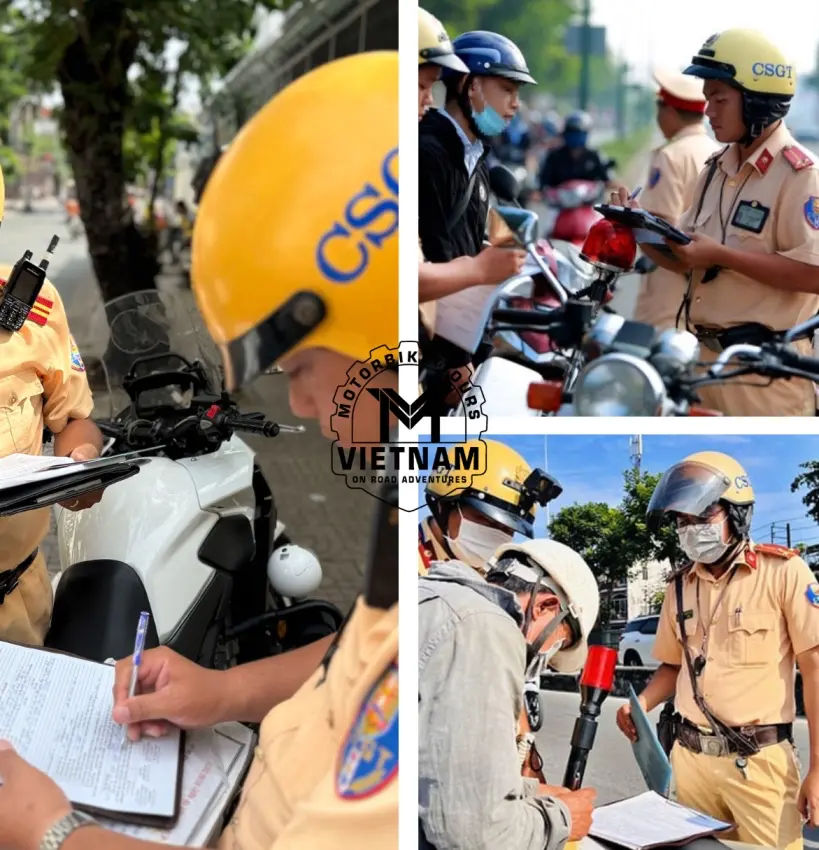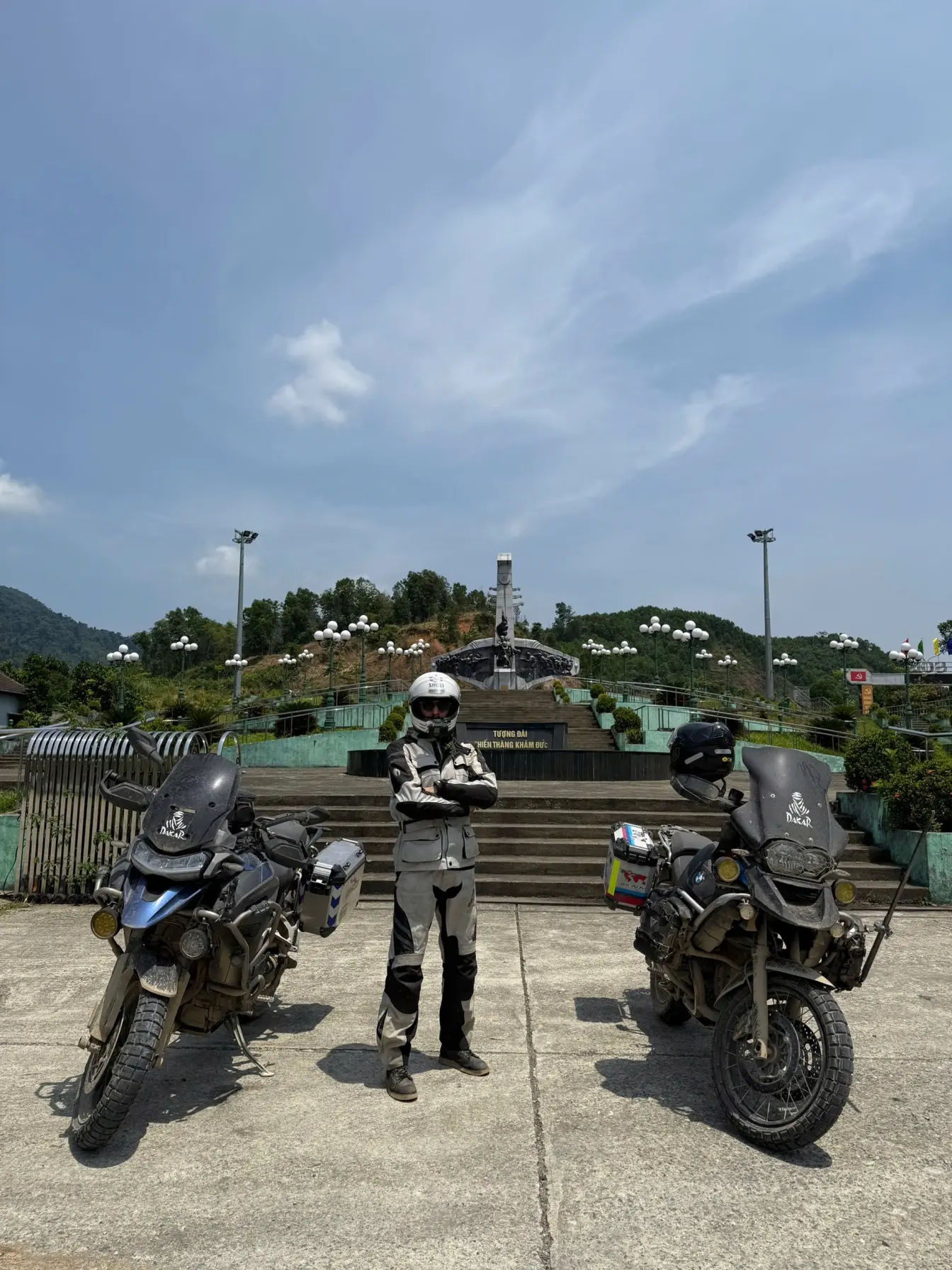
Fuel types in Vietnam sometimes make rider’s confused and fuel choices are a big part of it. With a growing variety of vehicles on the road, knowing which fuel to use can save you money, extend your bike’s life, and even reduce your environmental impact. From everyday scooters to high-powered motorcycles.
Vietnam offers several fuel options, each with unique properties: E5 RON 92, RON 95-V, RON 95-III, DO 0,001S-V, and DO 0,05S-II.
From my own rides around the northern mountains and even offroad adventures, I’ve learned that choosing the right fuel isn’t just about numbers—it’s about how your bike feels on the road. Scooters run smoothly on E5 RON 92, while larger motorcycles perform best on RON 95.
This guide walks you through each fuel type, shows how to find it at local stations, and shares tips to keep your ride running at its best. Whether you’re a daily commuter or a weekend explorer, knowing your fuel options makes every ride safer, smoother, and more enjoyable.
- Check out Motorbike tours in Vietnam
Fuel Types: Gasoline Prices in Vietnam (Sep 2025)
Fuel prices in September 2025 for RON 95 and E5 RON 92 gasoline. Filling your tank with the right fuel improves performance and efficiency, especially for off-road riding.
| Fuel Type | Price (VND/litre) | Price (USD/litre) |
|---|---|---|
| RON 95-V | 21,320 | ≈ 0.81 USD |
| RON 95-III | 20,830 | ≈ 0.79 USD |
| E5 RON 92 | 20,240 | ≈ 0.76 USD |
Rider Tip: Check your local station, as prices may vary slightly by area. Using the correct fuel keeps your bike running smoothly and efficiently.
Gasoline (Petrol) Fuels in Vietnam: E5 RON 92, RON 95-III, and RON 95-V
When you ride through Vietnam, choosing the right gasoline can make your bike feel more responsive and efficient. The key is understanding the RON (Research Octane Number). A higher RON prevents engine knocking, which is crucial for modern, high-compression engines. The Roman numerals like “V” and “III” indicate the fuel’s emission standard—Euro 5 or Euro 3—so higher numbers mean cleaner-burning fuel.
- Check out Ha Giang Loop motorcycle tours
E5 RON 92
Description: E5 RON 92 blends 95% regular gasoline with 5% bio-ethanol. The small ethanol content makes it a greener option than pure gasoline, supporting Vietnam’s push toward renewable fuels.
Vehicles: I’ve ridden both scooters and older motorcycles on E5 RON 92, and it performs reliably. Most vehicles, from older cars to everyday motorcycles, handle this fuel with ease, making it a versatile choice for riders across the country.
Common Usage: You’ll spot E5 RON 92 at nearly every gas station in Vietnam. Government policies promote biofuels, so this fuel is a go-to for daily commuters, scooter riders, and owners of older vehicles.
Rider Tip: For daily city rides or scooters, I recommend E5 RON 92. It’s slightly cheaper, kinder to the environment, and keeps your ride smooth without any fuss.
RON 95-III: Premium Gasoline for Modern Engines
When you ride or drive in Vietnam, choosing the right gasoline can make a noticeable difference in performance. RON 95-III is a premium fuel with a RON of 95, designed to meet Euro 3 and Euro 4 emission standards. Its higher octane rating delivers smoother acceleration, better efficiency, and more responsive engines, especially for modern vehicles built for high-compression fuel.
Vehicles: I’ve noticed that scooters and newer cars handle RON 95-III exceptionally well. While older vehicles can run on it, engines designed for higher octane fuel get the most benefits, including reduced knocking and improved mileage.
Common Usage: RON 95-III remains one of the most popular gasoline types in Vietnam. You can find it at almost every gas station, making it convenient for daily commuting, long rides, or city exploration.
Rider Tip: If your vehicle supports higher-octane fuel, stick with RON 95-III for smoother performance and a more efficient ride.
RON 95-V: Ultra-Clean Premium Gasoline for Modern Engines
If you ride or drive a modern motorcycle, the big GSA, Triumph, Africa Twin in Vietnam, choosing the right fuel affects both performance and longevity. RON 95-V is a high-grade gasoline that meets the strict Euro 5 emission standards. The “V” indicates it contains significantly fewer harmful substances, like sulfur, benzene, and aromatics, compared to RON 95-III. This cleaner fuel helps engines run smoother and protects emission control systems like catalytic converters.
Vehicles: I’ve seen how RON 95-V keeps new scooters, imported cars, and modern domestic vehicles performing at their best. Using lower-grade fuel in these engines can reduce efficiency and even cause long-term damage. RON 95-V ensures that engines designed for high standards stay healthy and responsive.
Common Usage: Major gas station chains like Petrolimex are expanding RON 95-V availability to meet demand from modern vehicle owners. However, rural areas may still have limited access, so planning ahead is important if you need this premium fuel.
Rider Tip: If your bike or car requires high-octane, clean gasoline, stick to RON 95-V for maximum engine performance, efficiency, and long-term protection.
Diesel Fuels in Vietnam: DO 0,001S-V vs. DO 0,05S-II
Even though motorcycles don’t run on diesel, you’ll spot diesel pumps at almost every fuel station in Vietnam. Knowing the difference between diesel types helps you avoid filling your bike with the wrong fuel—and potentially causing serious engine damage.
DO 0,001S-V
Description: This ultra-low sulfur diesel contains just 0.001% sulfur (10 parts per million) and meets Euro 5 emission standards. It represents the cleanest diesel fuel available in Vietnam, designed to reduce harmful emissions and protect sensitive engine components.
Vehicles: Modern trucks, buses, and commercial vehicles that comply with Euro 5 or higher engines run on DO 0,001S-V. Using a diesel fuel with higher sulfur content can clog diesel particulate filters (DPF) and damage catalytic converters.
Cost per Litre: DO 0,001S-V costs more than standard diesel because producing ultra-low sulfur diesel requires advanced technology.
Common Usage: Larger fuel stations usually carry DO 0,001S-V to serve modern diesel fleets. As more Euro 5-compliant vehicles enter the market, this fuel is becoming the standard choice for cleaner diesel engines.
DO 0,05S-II
Description: DO 0,05S-II is standard diesel with 0.05% sulfur (500 parts per million), meeting Euro 2 emission standards. It suits a wide range of older diesel vehicles but produces higher emissions compared to modern fuels.
Vehicles: Older trucks, buses, and industrial machines that don’t require Euro 5-compliant engines run on DO 0,05S-II without issues.
Cost per Litre: DO 0,05S-II is the more affordable diesel option, making it popular in cost-sensitive applications.
Common Usage: Smaller stations and rural areas usually carry DO 0,05S-II. It has been the standard diesel fuel for many years and remains widely available.
Rider Tip: Stick to gasoline for motorcycles. If you ever need diesel, knowing the difference between DO 0,001S-V and DO 0,05S-II ensures you pick the right one for modern or older diesel engines.
Which Fuel Type Should You Choose in Vietnam?
Picking the right fuel in Vietnam depends on your bike or car and how you ride or drive. For example, many cars and scooters run well on E5 RON 92, which balances affordability and efficiency. Some riders prefer RON 95 for better performance, especially on long trips or for larger displacement motorcycles.
From my own experience, I usually fill my scooter with E5 RON 92 for daily city rides—it’s a few cent cheaper, widely available, and keeps the engine running smoothly. When I take longer trips or ride a high-performance bike, I switch to RON 95. The engine responds better, accelerates smoothly, and feels more powerful on highways or winding roads.
Rider Tip: For most scooters and small cars, E5 RON 92 works perfectly. If you ride a larger displacement motorbike or want maximum performance, always fill your tank with RON 95. Choosing the right fuel not only improves efficiency but also extends your engine’s lifespan.
Which Gas Brand Should You Choose in Vietnam?
In Vietnam, I usually fill my tank at Petrolimex because it’s the most convenient station near my home. The staff is friendly, the station stays clean, and it feels safe, even in the evening. For longer trips across provinces, I prefer Petrolimex or PV oil Petro stations. I pick them not only for fuel quality but also for their clean restrooms, convenient mini-marts, and well-lit areas. These stations feel safe and comfortable during any stop, which makes a long journey more pleasant.
How to Fill Up Your Tank in Vietnam
All gas stations in Vietnam operate full-service options, just tell the attendant which fuel you need and how much to fill, and they handle the rest. It’s a good idea to know the basic Vietnamese words for fuel types to avoid mistakes:
- E5 RON 92: “Xăng 92 đầy” (Fill her up) or “Xăng 500 nghìn” (500,000 VND worth)
- RON 95: “Xăng 95 đầy” or “Xăng RON 95 500 nghìn”
Rider Tip: Always double-check the pump label and tell the attendant the fuel type clearly. Using the correct fuel ensures smoother engine performance and prevents costly mistakes.
Payment Options at Gas Stations in Vietnam
Paying for fuel in Vietnam is simple, and you have several options depending on the station and your preference. Learn more about currency & payments in Vietnam
- Cash: ALL gas stations accept Vietnamese Dong (VND) in cash. No USD or other foreign currency is accepted.
- Credit and Debit Cards: Major stations like Petrolimex, Saigon Petro, and PV Oil accept Visa and MasterCard. I use my card at larger stations at big cities for convenience, especially when traveling long distances.
- Mobile Banking & QR Payments: Many stations support Vietnamese banking apps and QR payments. Apps like Vietcombank, MoMo, and ZaloPay let you scan a QR code at the pump, which is quick and contactless.
What to Do if You Fill Up with the Wrong Fuel in Vietnam
Even experienced riders and drivers sometimes fill up with the wrong fuel. If you accidentally put diesel in a gasoline vehicle, or vice versa, your engine will react immediately—it may shake, sputter, or stall. While this situation isn’t dangerous, it can feel alarming. I’ve seen it happen, and knowing how to handle it saves both stress and money.
Here’s what I recommend:
- Pull over safely: Move your vehicle to the side of the road as soon as possible.
- Turn off the engine: Stop the ignition immediately to prevent further damage.
- Call a qualified mechanic: They can either dispatch a tow truck or bring the right fuel to run a temporary line so you can reach the workshop.
At the shop, the mechanic will drain and clean your fuel system. If your engine remains undamaged, you can refill with the correct fuel and continue driving. If parts of the fuel system suffered damage, the mechanic will replace them.
Rental cars or insurance: For rental vehicles, contact the company and explain the situation in detail. If it’s your own car, notify your insurance company—Type-1 insurance may cover repairs caused by filling the wrong fuel.
Rider Tip: Always double-check the pump label before refueling. Taking a few seconds to confirm your fuel type can save you a lot of trouble and expense.
FAQ: Fuel Types in Vietnam
Is it safe to use E5 RON 92 in my motorcycle?
Using E5 RON 92 is safe for most motorcycles in Vietnam. From my experience, the ethanol blend helps engines run cleaner and maintain better performance. Vietnam has widely used E5 RON 92 since 2018, and riders report smooth operation across both scooters and larger bikes.
One tip I follow: ethanol can attract moisture, so I ride my bike regularly instead of leaving it idle for long periods. This prevents water buildup in the fuel system and keeps the engine running reliably, even during the rainy season.
What should I do if I put the wrong fuel in my bike?
If you ever put the wrong fuel in your motorcycle, don’t turn on the engine. From my experience, the safest approach is to push the bike to a safe spot and call a trusted mechanic. They can drain and flush the fuel system, protecting your engine from potential damage and saving you from costly repairs.
Rider Tip: I always double-check the pump label before refueling to avoid this mistake, especially when riding in unfamiliar areas in Vietnam.
How can I save fuel while riding in Vietnam?
I save fuel on my motorcycle by keeping a steady hand on the throttle and avoiding sudden acceleration or hard braking. Smooth riding not only improves mileage but also makes the ride more enjoyable and controlled.
Proper maintenance also makes a big difference. I regularly check tire pressure, top up oil, and clean or replace air filters. Carrying only what I need helps too—excess weight makes the engine work harder and consumes more fuel.
Rider Tip: Combine smooth riding with routine maintenance, and you’ll notice real savings on fuel while extending your bike’s lifespan in Vietnam’s traffic conditions.
Are fuel stations easy to find in rural Vietnam?
You’ll find fuel stations in most towns and along major roads in Vietnam. With over 80 million motorcycles, most riders refill their 4L tanks regularly, making fuel stations common and convenient.
In remote areas, official stations appear less frequently. From my experience, locals often sell fuel from bottles on the roadside. While this can be convenient, the quality varies, and I try to avoid it whenever possible. Planning your route and filling up at regular stations ensures consistent fuel quality and peace of mind.
Rider Tip: Keep an eye on your fuel gauge and refill before entering sparsely populated areas to avoid relying on roadside vendors.
How do I know if the fuel I’m buying is good quality?
I stick to major, reputable fuel brands like Petrolimex (state-owned) and PVOil or just fill my tank at the gas stations, they all offer quality petrol. And tomato sure teh quality, always go for RON 95.
From experience, I avoid roadside vendors or stations with unusual prices—they sometimes mix additives or let moisture accumulate in the fuel, which can harm the engine. Choosing a trusted station gives me confidence that my motorcycle will run smoothly and perform at its best.
Rider Tip: Prioritize well-known brands for every refill. It takes only a few extra minutes but prevents costly engine problems and keeps your ride reliable across Vietnam.
Conclusion: Choose the Right Fuel for Better Performance for riding in Vietnam
From my experience riding and driving across Vietnam, using the correct fuel makes a noticeable difference in engine performance, efficiency, and longevity. Always check your vehicle’s manual or the fuel cap label to confirm the recommended fuel type—this prevents costly engine damage and keeps your ride smooth.
For modern motorcycles and cars, fuels labeled with “-V,” like RON 95-V or DO 0,001S-V, provide cleaner combustion and lower environmental impact. They reduce harmful emissions such as NOx, SOx, and particulate matter, helping protect both your health and Vietnam’s air quality.
Investing in the right fuel ensures your engine delivers optimal power, improves mileage, and extends its lifespan. While cleaner fuels may cost slightly more, the performance and environmental benefits make them worth every extra đồng. Choosing wisely today keeps your vehicle running reliably tomorrow.
About the Author: Hamid is an avid rider and motorcycle enthusiast who explores Vietnam on two wheels. He shares practical tips, fuel guides, and travel insights for fellow riders.



